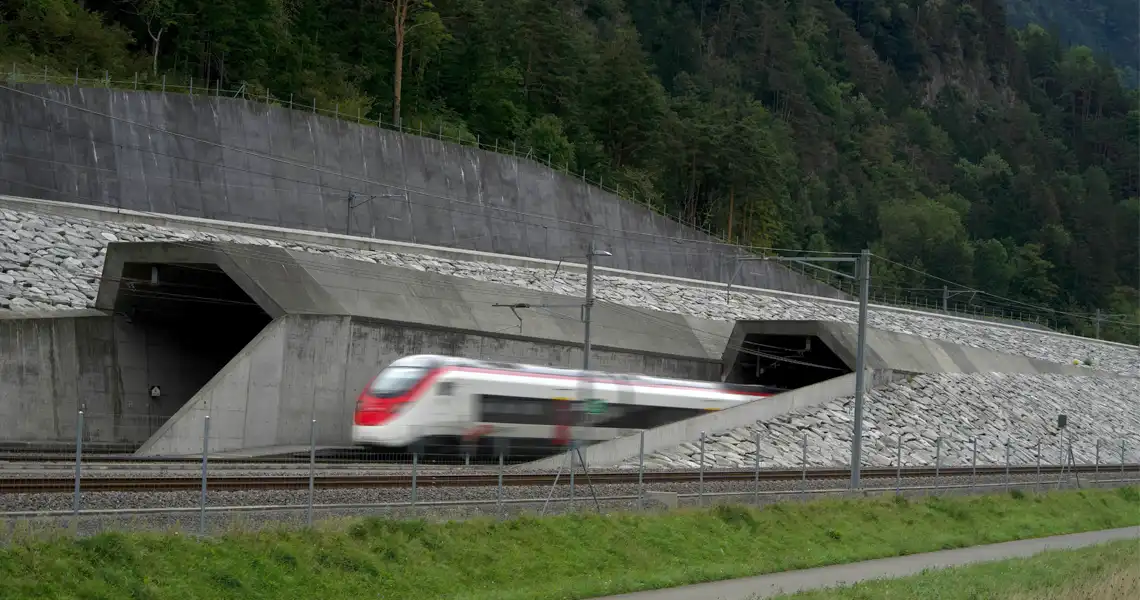Project Overview
The Gotthard Base Tunnel (GBT) is the longest railway tunnel in the world at 57 km, a key corridor connecting Northern and Southern Europe. The project required high-voltage (HV), signalling, and TBM cables to ensure the tunnel’s power and communication systems could function under extreme conditions.
Client: AlpTransit Gotthard AG
Contract Value: £ 1.5M
Cable Type: HV, Signaling, Tunnel TBM
Key Challenges & Tratos’ Solutions
Harsh Underground Conditions
The tunnel passes through multiple rock types, including granite and sedimentary layers, creating extreme pressure on cables.
Tratos’ Solution: We supplied mechanically reinforced cables with robust sheathing, designed to withstand high tension and potential crushing forces.
Fire Safety & Smoke Emission Risks
In deep tunnels, smoke and toxic gas from burning cables pose a major hazard in evacuation scenarios.
Tratos Solution
Tratos’ Solution: We provided low-smoke, zero-halogen (LSZH) cables, compliant with EN 45545-2 railway fire standards, ensuring passenger safety.
Long-Distance Power Transmission & Signal Integrity
A 57 km tunnel requires high-capacity power cables with minimal energy loss and disturbance-free data transmission.
Tratos’ Solution: Engineered high-voltage cables with reduced dielectric losses and EMI-shielded fibre-optic signalling cables for uninterrupted communication.
Outcome
The Gotthard Base Tunnel became a benchmark in railway tunnel electrification, reducing travel time across Europe. Tratos’ cables ensured a reliable, low-maintenance power and communication system, helping the project achieve its 100-year design life.
About Gotthard Base Tunnel
The Gotthard Base Tunnel (GBT) in Switzerland is a remarkable feat of engineering that has transformed rail travel through the Alps and boasts several fascinating attributes:
- World’s Longest and Deepest Railway Tunnel: With a length of 57.09 kilometres (35.5 miles), the GBT holds the title of the world’s longest railway tunnel. Additionally, it reaches a maximum depth of approximately 2,300 meters (7,546 feet) beneath the Swiss Alps, making it the deepest traffic tunnel globally.
- First Flat, Low-Level Route Through the Alps: Unlike previous Alpine crossings that required steep gradients and winding paths, the GBT provides a nearly flat route with a maximum elevation of 549 meters (1,801 feet) above sea level. This design facilitates more efficient and faster rail travel across the mountain range.
- Enhanced European Connectivity: The tunnel forms a vital link in the trans-European rail network, connecting Rotterdam in the Netherlands to Genoa in Italy. This enhances the efficiency of both passenger and freight transportation across the continent.
- Massive Excavation Effort: Construction of the GBT required the excavation of approximately 28.2 million tonnes (about 8.2 million cubic meters) of material. Notably, a third of this excavated material was recycled back into the tunnel’s construction as concrete and shotcrete.
- Simultaneous Excavation from Multiple Sites: To expedite construction, excavation occurred simultaneously from five different sites. This approach significantly reduced the overall construction time and showcased innovative engineering techniques.










